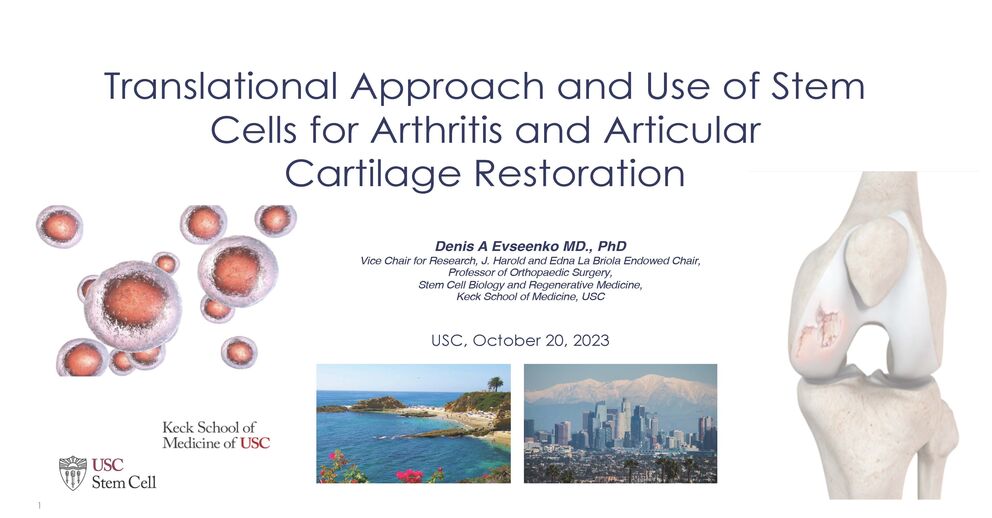Syllabus/Topics
- Topics covered
- Review of problems associated with arthritis
- Technologies preclinical studies conducted
- Feedback from FDA
- What are synovial joints?
- A structure where bones connect to move body parts.
- ~200 bones and ~250 joins in body
- Articular cartilage is thin and is composed of unique tissue.
- Diseases of synovial joint:
- Osteoarthritis is the most highly observed disease
- Focal cartilage lesions
- Treatments:
- Microfracture surgery
- Autologous chondrocyte implants
- Other Procedures:
- AMIC procedure
- Infusion of mesenchymal cells
- Diseases are identified based on their symptoms
- None of the cell types can grow proper cartilage in humans
- Some not FDA-Approved
- Specification of articular cartilage cells in humans (Development)
- Morula (pluripotent stem cells): Day 1
- Gastrulation: 21 day
- Multipotent skeleton progenitors: 4 to 6 weeks
- Functional chondrocytes: 7 to 8 weeks
- Stable articular cartilage: after 8 weeks
- Embryonic cells and induced pluripotent stem cells
- Sources of pluripotent stem cells
- Developmental chondrogenesis
- This study was done on mice to understand the process and maintenance
- Protocol to prepare juvenile cartilage cells
- Conceptual studies
- Pluocart Development Team
- Manufacturing and Controls (GMP)
- Production and release of Master and Working Cell banks of initial cell type will make a product that will be produced under GMP conditions
- Technology transfer & manufacturing of the Pluocart implants for Phase 1 Clinical Trial under GMP standards
- FDA requested GLP Safety Studies
- Assessment of tumorigenicity and adverse events in vivo
- Phase 1 study: The primary objective was the safety evaluation of Plutocrat as measured via adverse event monitoring
- 2022 Clinical award from CRIM
- Summary
- Systematic analysis of human developmental chondrogenesis defined critical parameters for large-scale manufacturing of functional juvenile articular chondrocytes from Human PSC
- Pluocart is a new-generation bioimplant
- “First-in-man” Phase 1 trial of Pluocart for small and large cartilage lesions scheduled in years to come
- Questions
Acknowledgment
Accompanying text created by Roxy Terteryan, RKS Project Administrator, SC CTSI (atertery@usc.edu)

